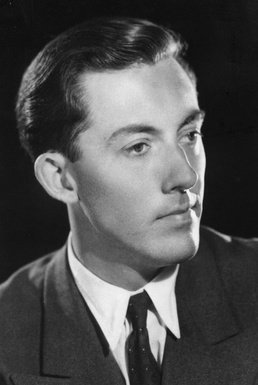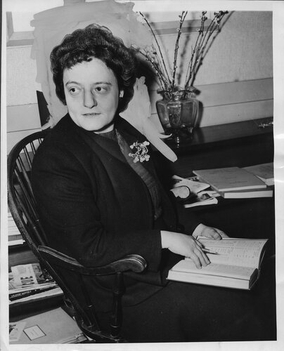Related Research Articles

Linear B is a syllabic script that was used for writing in Mycenaean Greek, the earliest attested form of the Greek language. The script predates the Greek alphabet by several centuries, the earliest known examples dating to around 1450 BC. It is adapted from the earlier Linear A, an undeciphered script perhaps used for writing the Minoan language, as is the later Cypriot syllabary, which also recorded Greek. Linear B, found mainly in the palace archives at Knossos, Kydonia, Pylos, Thebes and Mycenae, disappeared with the fall of Mycenaean civilization during the Late Bronze Age collapse. The succeeding period, known as the Greek Dark Ages, provides no evidence of the use of writing.

Michael George Francis Ventris, was an English architect, classicist and philologist who deciphered Linear B, the ancient Mycenaean Greek script. A student of languages, Ventris had pursued decipherment as a personal vocation since his adolescence. After creating a new field of study, Ventris died in a car crash a few weeks before the publication of Documents in Mycenaean Greek, written with John Chadwick.
Below are notable events in archaeology that occurred in 1952.

John Chadwick, was an English linguist and classical scholar who was most notable for the decipherment, with Michael Ventris, of Linear B.
Below are notable events in archaeology that occurred in 1922.
The year 1976 in archaeology involved some significant events.
The year 1997 in archaeology involved some significant events.
The year 1979 in archaeology involved some significant events.
The year 1958 in archaeology involved some significant events.
Below are notable events in archaeology that occurred in 1920.
Below are notable events in archaeology that occurred in 1933.

Mabel Louise Lang was an American archaeologist and scholar of Classical Greek and Mycenaean culture.

Alice Elizabeth Kober was an American classicist best known for her work on the decipherment of Linear B. Educated at Hunter College and Columbia University, Kober taught classics at Brooklyn College from 1930 until her death. In the 1940s, she published three major papers on the script, demonstrating evidence of inflection; her discovery allowed for the deduction of phonetic relationships between different signs without assigning them phonetic values, and would be a key step in the eventual decipherment of the script.

Longbridge Deverill is a village and civil parish about 2.5 miles (4.0 km) south of Warminster in Wiltshire, England. It is on the A350 primary route which connects the M4 motorway and west Wiltshire with Poole, Dorset.

Yosef Garfinkel is an Israeli archaeologist and academic. He is a professor of Prehistoric Archaeology and of Archaeology of the Biblical Period at the Hebrew University of Jerusalem.
Emmett Leslie Bennett Jr. was an American classicist and philologist whose systematic catalog of its symbols led to the solution of reading Linear B, a 3,300-year-old syllabary used for writing Mycenaean Greek hundreds of years before the Greek alphabet was developed. Archaeologist Arthur Evans had discovered Linear B in 1900 during his excavations at Knossos on the Greek island of Crete and spent decades trying to comprehend its writings until his death in 1941. Bennett and Alice Kober cataloged the 80 symbols used in the script in his 1951 work The Pylos Tablets, which provided linguist John Chadwick and amateur scholar Michael Ventris with the vital clues needed to finally decipher Linear B in 1952.

Sonia Chadwick Hawkes was a British archaeologist specialising in early Anglo-Saxon archaeology. She led excavations on Anglo-Saxon cemeteries at Finglesham in Kent and Worthy Park in Hampshire. She was described by fellow medieval archaeologist Paul Ashbee as a "discerning systematiser of the great array of Anglo-Saxon grave furnishings".
The Wadi Rabah culture is a Pottery Neolithic archaeological culture of the Southern Levant, dating to the middle of the 5th millennium BCE.

Khirbet er-Ra'i, also Khirbet al-Ra'i, is an archaeological site in the Shephelah region of Israel. It is located 4 km west of Lachish.

PY Ta 641, sometimes known as the Tripod Tablet, is a Mycenaean clay tablet inscribed in Linear B, currently displayed in the National Archaeological Museum, Athens. Discovered in the so-called "Archives Complex" of the Palace of Nestor at Pylos in Messenia in June 1952 by the American archaeologist Carl Blegen, it has been described as "probably the most famous tablet of Linear B".
References
- ↑ Verdelis, Nikolaos. "Le diolkos de L'Isthme". Bulletin de Correspondance Hellénique 1957, 1958, 1960, 1961, 1963.
- ↑ Hawkes, Sonia Chadwick (1994). "Longbridge Deverill Cow Down, Wiltshire, House 3: A Major Round House of the Early Iron Age". Oxford Journal of Archaeology. 13 (1): 49–69. doi:10.1111/j.1468-0092.1994.tb00031.x. ISSN 0262-5253.
- ↑ "Virginia City News". virginiacitynews.com. Retrieved 22 December 2017.
- ↑ Jamieson, Andrew (12 October 2017). "Scholar brought the ancient world to life". The Sydney Morning Herald. Retrieved 12 November 2017.
- ↑ "Garfinkel, Yosef". worldcat.org. Retrieved 3 June 2017.
- ↑ "Michael Ventris - British architect and cryptographer". Encyclopedia Britannica. Retrieved 30 May 2017.
- ↑ "John Garstang". Britannica.com. Retrieved 24 May 2017.